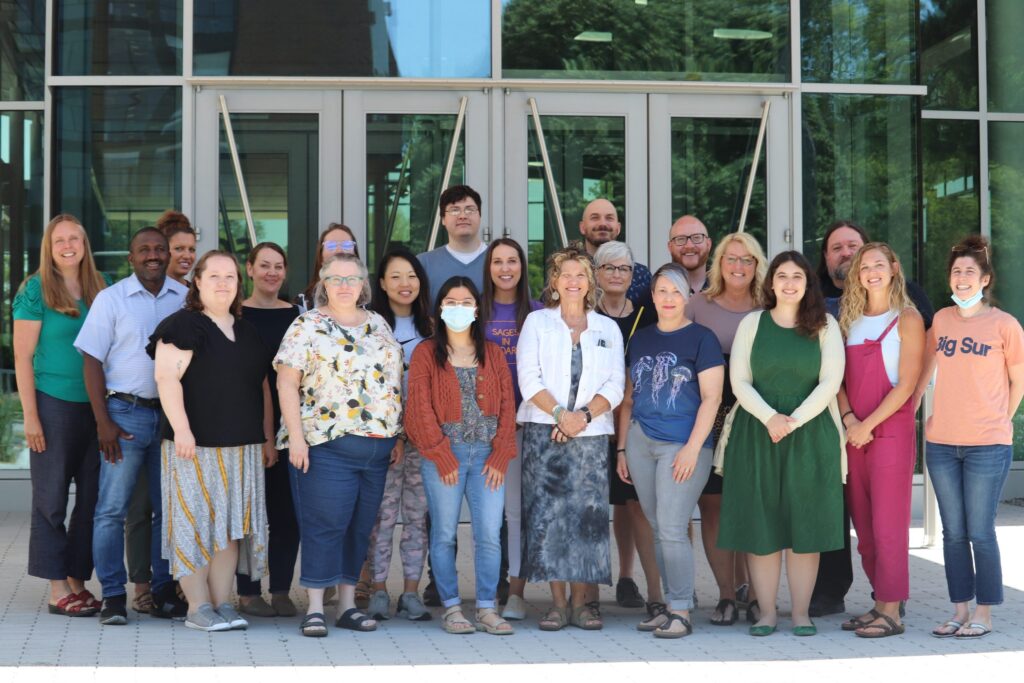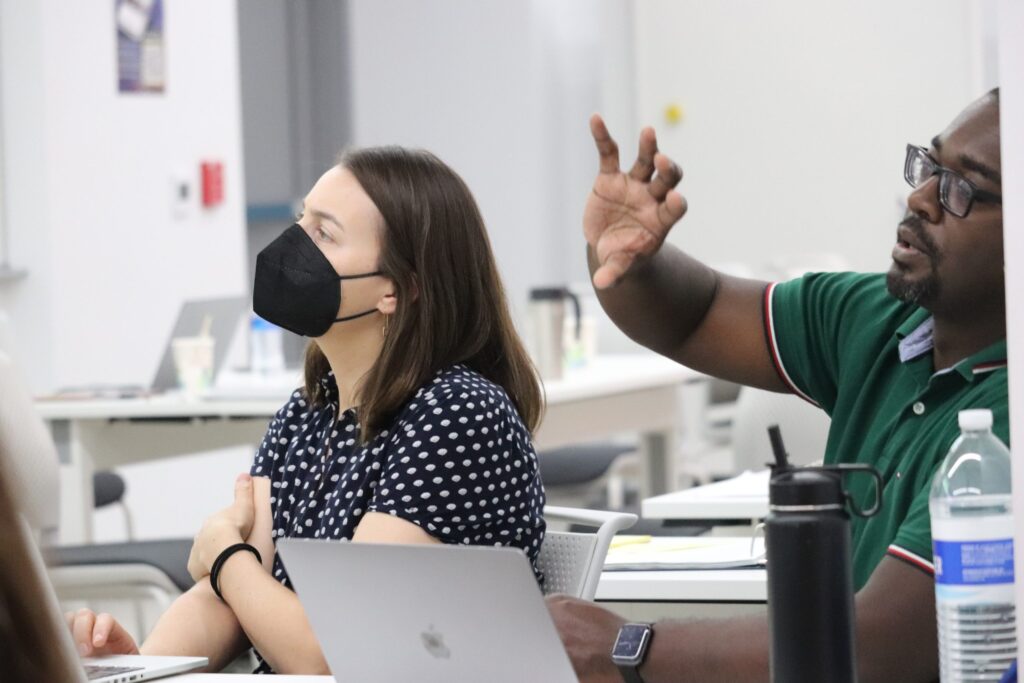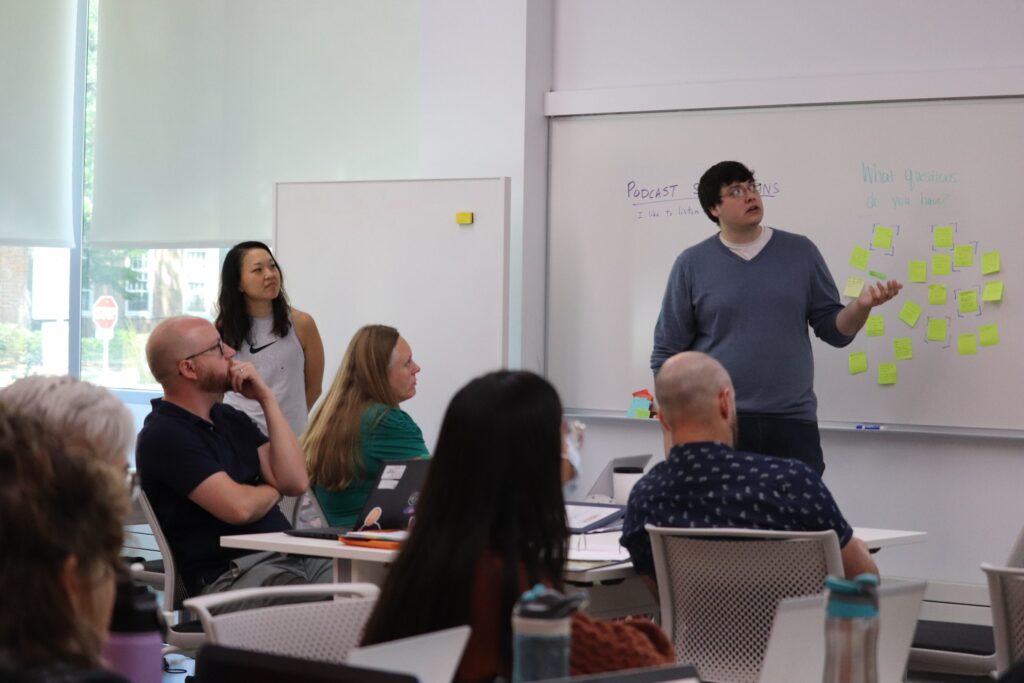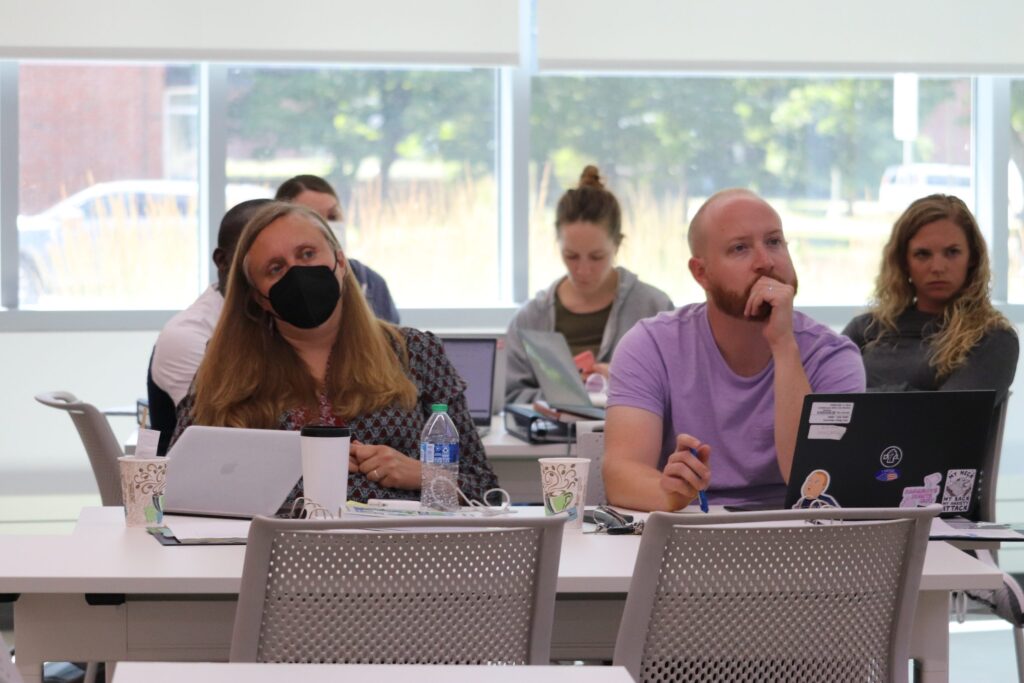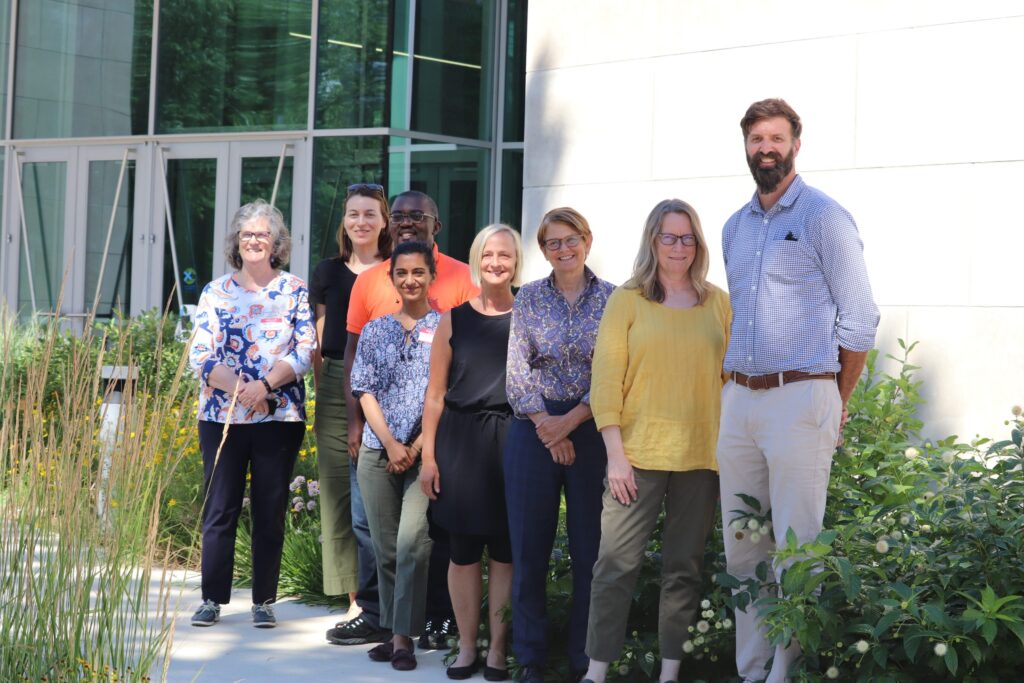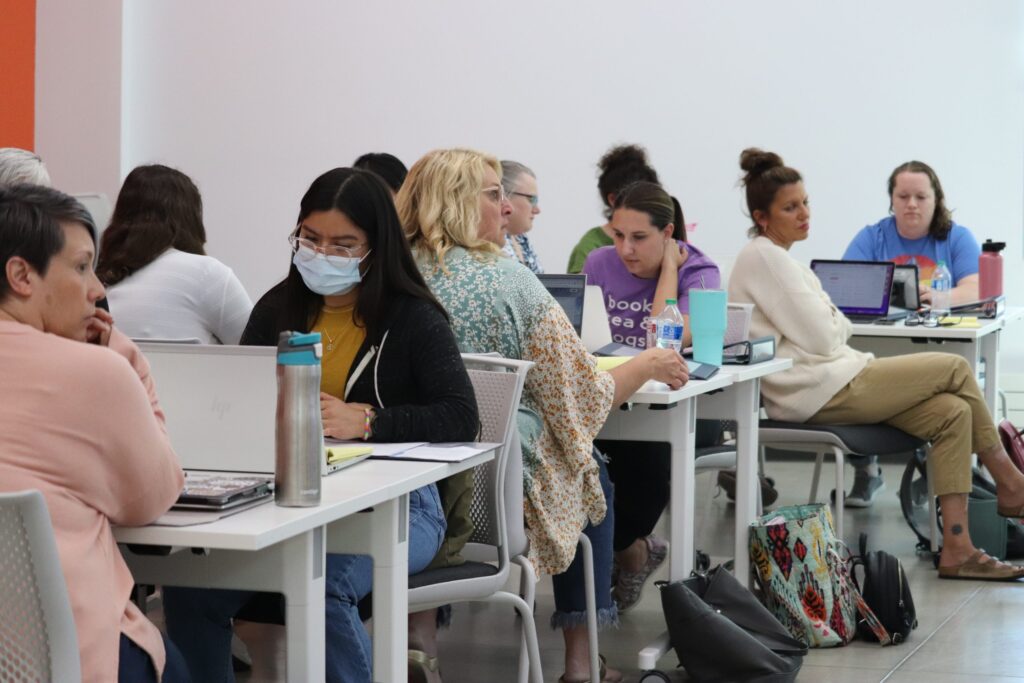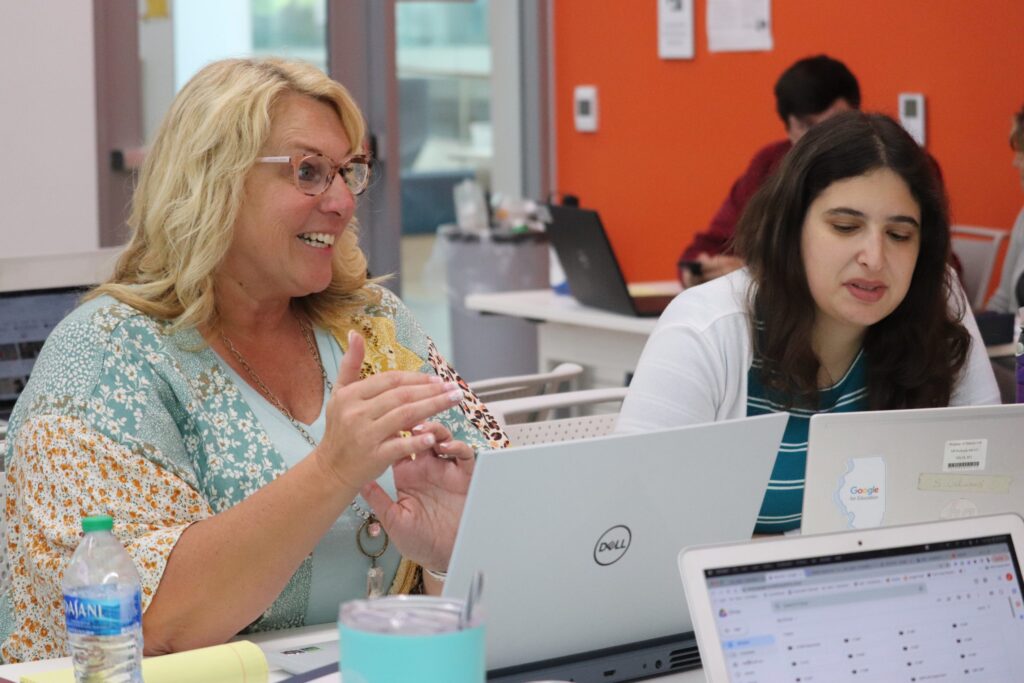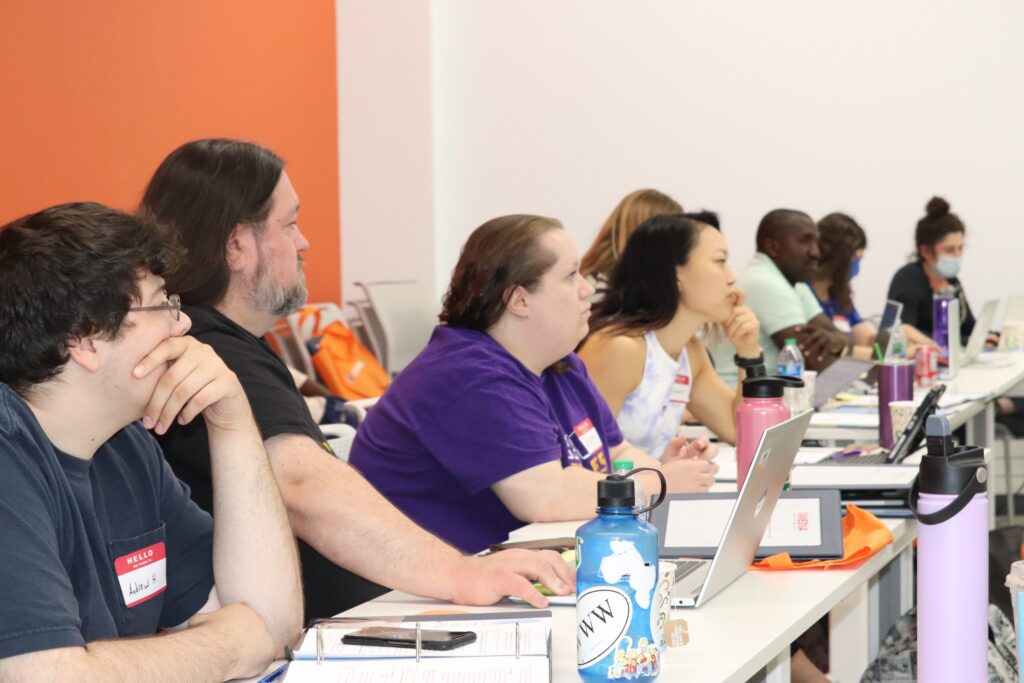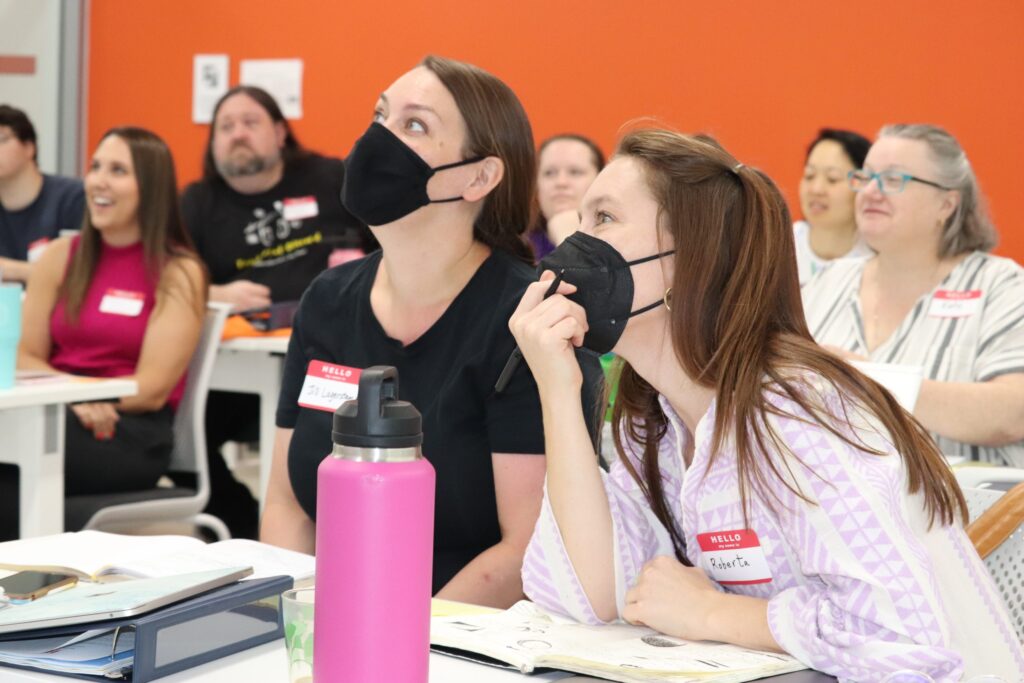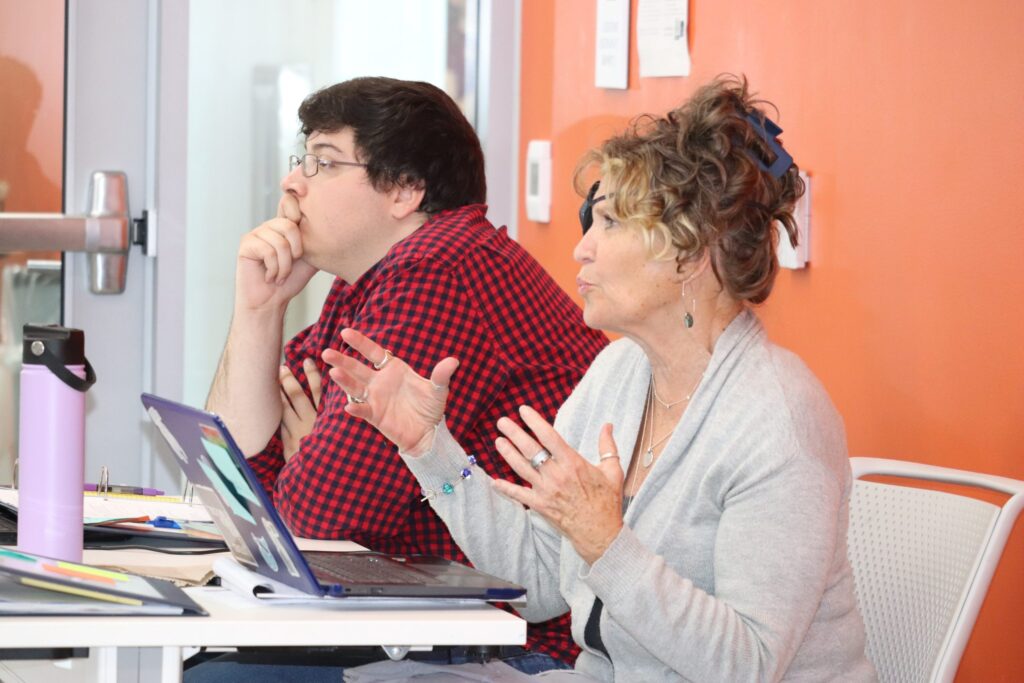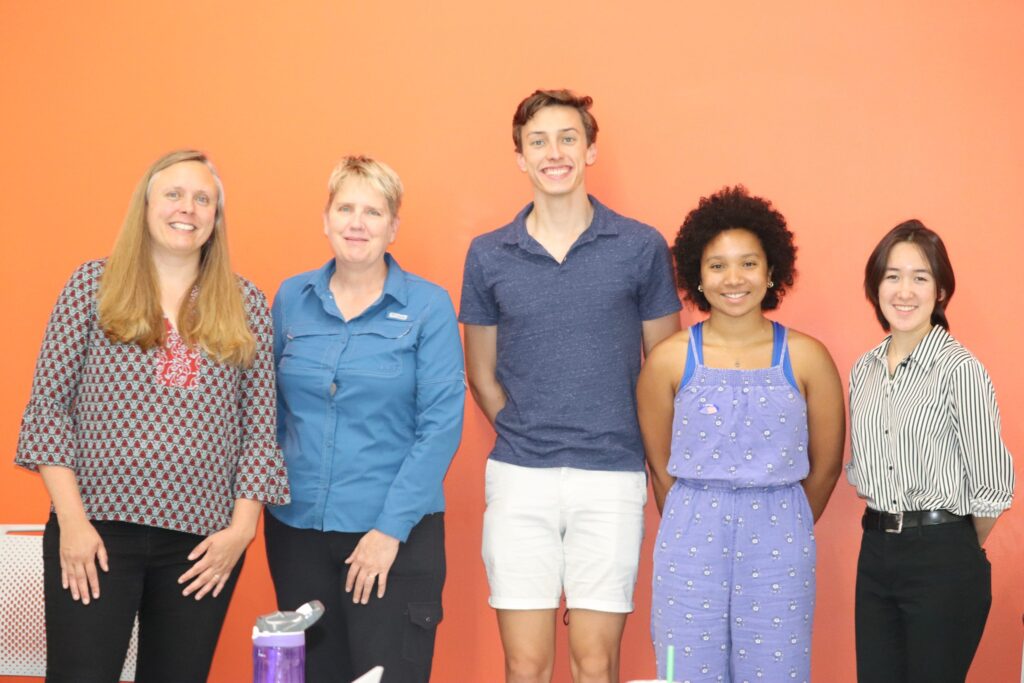Inaugural Summer Workshop for Illinois Public High School Teachers
June 27 & 28: 9 AM – 4 PM; June 29: 9 AM – 1 PM
Siebel Center for Design 1000/1002, 1208 S. 4th St., Champaign, IL 61820
In this intensive 2 1/2-day workshop on media literacy, you can learn to help your students access, analyze, evaluate, create and communicate using a variety of media forms. Designed to help teachers meet the Illinois state mandate for media literacy instruction, the hands-on workshop shows how media literacy knowledge and skills can be incorporated in all kinds of courses.
- Michael Spikes (Northwestern) will facilitate the workshop with modules from professors in the Colleges of Media and Education at the University of Illinois. Workshop limited to 20 participants.
- Benefits include: Learn ways to incorporate media and media literacy into your course; learn how to fulfill the law (Public Act 102-0055 mandating a unit of media literacy instruction in public high schools); earn a stipend and earn CPDU credits.
Please contact IMEDIA at imedia@illinois.edu for more information.
Day 1 – June 27, 2022
Theme: Overview of Media Literacy (Based on ILMLC 4 “pillars”) – ANALYZING
| Time | Item |
| 9:00 AM | Intros & Welcome – Teachers share name, school, subject, what brought them here – Sharing of previous use of media literacy in classrooms. – Introduce final products and goals for workshop |
| 9:30 AM – 10:30 AM | Introducing the ILMLC ML Framework / Media as Constructions: Know Your Neighborhood ILMLC Framework Central Concepts (“Pilars”) – All media messages are constructed toward a specific purpose. – The choice of medium in which a message is created and distributed impact how that message is interpreted. – Media are powerful communication tools that people use to influence actions, attitudes, beliefs and values. – Analyzing media messages, evaluating their impact, and reflecting on our media use provide us greater control over its use. Lesson Objectives: – Identify the challenges inherent in our current information era. – Identify the characteristics that distinguish journalism from other genres of media. – Apply those characteristics to the analysis of other actionable information and media. Lesson Takeaways: – In the Information Age, You, the consumer, are in charge of determining what is reliable and what is not. – There are four major challenges for consumers in today’s world: Speed vs. Accuracy, Information Overload, The Blurring of the Lines, and Overcoming our own Biases / Pre-dispositions – Information can be separated into neighborhoods based on key characteristics. – News is characterized with the acronym V.I.A. (Verification, Independence, and Accountability) – Other forms of media will borrow characteristics of news, creating a blurring of the lines between categories Activity (time permitting) – In breakout groups, and with a piece of pre-selected media, apply two of the lesson takeaways toward analyzing the media piece. |
| 10:30 AM – 10:45 AM | BREAK |
| 10:45 AM – 12:00 PM | Determining Truth & The Process of Media Verification / Judging Evidence by Medium Lesson Objectives: – Identify the parallels between scientific truth and journalistic truth – Describe the “provisional” nature of journalistic truth – Apply the concepts of context and transparency for judging the credibility of a piece of information. Lesson Takeaways: – Journalistic truth is provisional, and may evolve as more evidence emerges – Information consumers can test for veracity by developing questioning strategies around evaluating evidence, asking if facts are put into context, determining transparency, and asking “did the reporter/source ‘open the freezer?’“ Activity – In another breakout group, discuss a previous lesson or classroom situation that involved student research or the seeking of information that may be served with one of the takeaways shared above. How would you use it, introduce it? |
| 12:00 PM – 1:00 PM | Working Lunch – Lunchtime group discussion with artifacts |
| 1:00 PM – 1:30 PM | Report Out / Engaging with Concepts 1 & 2 Activity |
| 1:30 PM – 2: 45 PM | Using the Concepts of Balance and Fairness toward an Understanding of Media Bias & Audience Bias Lesson Objectives: – Define Fairness Balance in the context of news media literacy – Define bias in the context of news media literacy – Identify how an information consumer determines bias on the part of a media outlet / producer. – Compare the differences between news media bias and audience bias. – Apply the definitions to various media to assess their credibility. Lesson Takeaways: – Fairness in news media is determined through an evaluation of the language and presentation of relevant perspectives on an issue – Balance is essentially a quantitative measurement of presentation from both sides of a story. – Fairness may sometimes require balance. However, the misuse of balance can create a false equivalency in a story. – Bias on the part of a media outlet is not defined as a single event, but a pattern of unfairness when covering a subject. – Cognitive dissonance and rise of partisan outlets of information can fuel audience bias and an overall distrust of institutionalized news media. – To determine credible information sources, consumers should seek out content from a variety of outlets, including those of journalism and opinions that they disagree with. Activity – In another breakout group, discuss a current event and apply a takeaway from this lesson to your understanding of that event, or a piece of media used for making sense of the event. |
| 2:45 PM – 3:00 PM | BREAK |
| 3:00 PM – 3:30 PM | Further Practice of News Media Literacy with Media Deconstruction Lesson Objective: – Apply the tools that you’ve learned to various pieces of media to assess their credibility. Activity – Create a rubric for a think aloud activity that would take students through the deconstructing of a piece of actionable information. What elements would you keep? What would you edit or remove? Why? |
| 3:30 PM – 4:00 PM | Review / Q&A / Reflect (Identify Presentation themes) |
Day 2 – June 28, 2022
Theme: Deeper Connections and Instructor Demos of Media Literacy Concepts (teaching, interactive lesson, discussion) – CREATING
| 9:00 AM | The “Propaganda of History” Lesson Objectives: – Examine the use of “Propaganda” to shape national narratives after Reconstruction – Identify how the media was used for social and political change during the Civil Rights Movement – Examine how textbook bias connects to news and media bias in classrooms today Lesson Takeaways: – Academic subjects are often framed as “objective” but hold biases, oftentimes with political intent – The “Lost Cause” narrative was based on a misrepresentation of facts through academic, cultural, and news outlets – Media has been used by activists to achieve social and political changes as evidenced by national reaction to the Brown decision, the murder of Emmett Till, and the Sit-In Movement – To explore the role of news and social media bias today, consumers should connect to a larger historical context Activity: – Participants will examine primary source footage and news coverage connected to the Lost Cause and the Civil Rights Movement and discuss their portrayal through an individual quick-write and a large group discussion |
| 9:30 AM – 10:30 AM | Critical Primary Sources and Social Crises Today Lesson Objectives: – Examine criteria used to evaluate sources used in the classroom – Explore counternarratives and multiple perspectives on current issues today, including but not limited to the Russian-Ukrainian War, the Uvalde mass shooting, and the “culture wars” in education – Identify the principles behind Civic Online Reasoning, civic engagement, and taking informed action in today’s classroom Lesson Takeaways: – Sources integrated into the curriculum must be evaluated through professional standards and tools such as the Historical Thinking Chart – Multiple perspectives and counternarratives deepen critical thinking, foster awareness, and cultivates empathy across ideological divisions – Primary sources include contemporary documents and subjects’ voices closest to the source and must be cited when discussing current events that are divisive – Civic engagement and taking informed action are part of new curriculum standards, which are visible in the March for Our Lives and Fridays for Future/School Strike for Climate Activity – Participants will “take a stand” on the debates that underpin the Russian-Ukranian War, Uvalde, the climate crisis, or Critical Race Theory, and support stances with sources evaluated in small groups |
| 10:30 AM – 10:45 AM | BREAK |
| 10:45 AM – 12:00 PM | Teaching with Documentary Lesson Objectives: – Consider the rise in popularity of documentary, and non-fiction media forms in general, among students – Build awareness of how documentary can increase students’ media literacy and be ready to offer critical media literacy questions in an existing curricular unit – Examine a rubric for critically engaging with documentaries in the classroom – Introduce a tool for annotation of documentaries for upper-level use – Consider the role of documentary production in the classroom. – Learn strategies for creating an audio documentary/podcast production unit in your class. Lesson Takeaways: – The rise of online media has increased student exposure to nonfiction media. – Documentaries can be powerful counterweights to “headline bias” and dominant worldviews. – Viewing Questions elicit media literacy-based interrogation of documentaries: considering constructedness, worldview, intention, medium and form, and industry. – VideoAnt allows for video annotation and sharing – Documentary production can play a role in active student learning around sources, perspectives, counter-narratives, and civic engagement. |
| 12:00 PM – 1:00 PM | Working Lunch – TikTok Panel Objectives: – Hear from students about their TikTok use and experiences – Examine TikTok’s business model and architecture, types of content, formal elements, and student consumption and production practices – Consider its impact around student experience, culture and knowledge, including exposure to events, worldviews, and popular culture, type and amount of media consumption, etc. – Engage with students’ thoughts and opinions about TikTok content, business, and their and their peers’ own practices – Explore some of the tools for producing TikToks |
| 1:00 PM – 1:45 PM | TikTok Production Time Objectives: – With the help of student mentors, apply some of the knowledge gained on TikTok content, form, and production strategies to make a TikTok – We don’t have to become TikTok influencers, or even use TikTok in our classrooms – the goal is to gain some experience constructing TikToks so we can better deconstruct them |
| 1:45 PM – 2:00 PM | BREAK |
| 2:00 PM – 3:00 PM | The “Attention Economy” Lesson Objectives: – Define common economic models of online media and the “attention economy” – Explore some of the technical Internet “architecture” of monetizing attention – Consider the advantages and disadvantages of keeping our attention, presenting us with certain choices, and catering content to tracked interests and behaviors – Discuss some classroom activities for building critical awareness of the attention economy Lesson Takeaways: – “If you don’t pay for a product, you are the product.” – Online companies, advertisers, and data brokers use a largely invisible system (including including cookies, trackers, and algorithms) to identify and track online activities, tailor and personalize content, to optimize, recommend, and amplify certain media to keep us engaged and serve us ads – There are repercussions – positive in terms of ease and enjoyment – and negative in terms of the economic exploitation of optimized advertising, the potential narrowing of worldviews produced by the customization of “filter bubbles,” the toxicity of amplified extreme content, the inequality reinforced by algorithmic bias, and the effects on wellbeing of induced extended online media engagement. – Level-specific resources and activities can facilitate critical discussions of these issues, and upper-level civic engagement projects may help combat cynicism and feelings of disempowerment |
| 3:00 PM – 3:15 PM | BREAK |
| 3:15 PM – 4:00 PM | Presentation Prep |
Day 3 – June 29, 2022
Theme: Teacher Demo Day
| 9:00 AM – 10:00 AM | Final Preparation for Presentations |
| 10:00 AM – 10:20 AM | Break and Optional Siebel Center Tour with Gail Rost, Lead of the K-12 Learning Lab |
| 10:20 AM – 12:30 PM | Final Presentations |
| 12:30 PM – 1:00 PM | Survey for Professional Development Credit and IMEDIA feedback |
